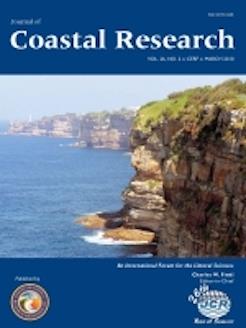Spatial trends in the shape of profiles of South San Francisco Bay (SSFB) tidal flats are examined using bathymetric and lidar data collected in 2004 and 2005. Eigenfunction analysis reveals a dominant mode of morphologic variability related to the degree of convexity or concavity in the cross-shore profile—indicative of (i) depositional, tidally dominant or (ii) erosional, wave impacted conditions. Two contrasting areas of characteristic shape—north or south of a constriction in estuary width located near the Dumbarton Bridge—are recognized. This pattern of increasing or decreasing convexity in the inner or outer estuary is correlated to spatial variability in external and internal environmental parameters, and observational results are found to be largely consistent with theoretical expectations. Tidal flat convexity in SSFB is observed to increase (in decreasing order of significance) in response to increased deposition, increased tidal range, decreased fetch length, decreased sediment grain size, and decreased tidal flat width.
How to translate text using browser tools
1 March 2010
Spatial Trends in Tidal Flat Shape and Associated Environmental Parameters in South San Francisco Bay
Joshua A. Bearman,
Carl T. Friedrichs,
Bruce E. Jaffe,
Amy C. Foxgrover
ACCESS THE FULL ARTICLE

Journal of Coastal Research
Vol. 26 • No. 2
March 2010
Vol. 26 • No. 2
March 2010
concavity
convexity
eigenfunction analysis
EOF
morphodynamics
mudflat




